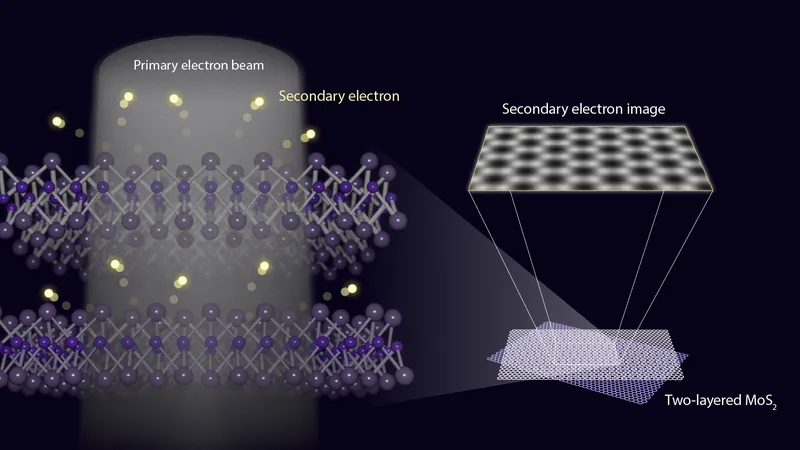
Revolutionary Electron Imaging Unveils the Stunning Colors of Surface Atoms!
2024-11-18
Author: Jacques
Introduction
Surfaces are more than just the outer shell of materials; they play a pivotal role in countless chemical processes, including catalysis and corrosion. Understanding the atomic structure of the surface layer of functional materials is crucial for advancements in engineering and chemistry.
Breakthrough in Imaging Technology
A groundbreaking study by researchers at Nagoya University in Japan shines new light on these surfaces through atomic-resolution secondary electron (SE) imaging, revealing vibrant atomic arrangements that were previously hidden from view.
Surface Reconstruction
Published in the renowned journal *Microscopy*, their research delves into the phenomenon of "surface reconstruction," where atoms on the surface are arranged in ways that differ from those in the material's interior.
Limitations of Traditional SEM
This intricate behavior can only be captured through surface-sensitive techniques, and for a long time, traditional scanning electron microscopy (SEM) has been the go-to method for examining nanoscale structures. However, conventional SEM methods struggle to discern atomic-level details, particularly when dealing with just a single atomic layer.
Innovative Approach of the Nagoya Team
The Nagoya University team set out to overcome this challenge by utilizing a two-layered molybdenum disulfide (MoS2) sample, allowing them to investigate the depth of information that SE imaging could unearth from both surface and subsurface layers.
Impressive Results
Their results were nothing short of impressive: the intensity of secondary electron images from the surface layer was approximately three times greater than that from the underlying layer, underscoring the remarkable sensitivity of this imaging technique.
Visual Representation
The SE images taken of a single-layer MoS2 sample revealed breathtaking honeycomb-like structures formed by molybdenum and sulfur atoms.
Insights from the Study
This extraordinary visual representation not only captivated the eye but also offered critical insights; overlapping patterns demonstrated significant differences in atomic arrangements at different depths.
Lead Researcher's Statement
Koh Saitoh, the lead researcher from Nagoya University’s Institute of Materials and Systems Sustainability (IMASS), noted, "The SE yield from the surface layer exceeds that of the second layer significantly, demonstrating the method's depth sensitivity and its ability to capture atomic reconstruction phenomena.”
Implications for Future Research
This innovative approach could potentially revolutionize our understanding of material science and open new avenues in the design of catalysts and nanomaterials.
Conclusion
As these researchers continue to unlock the secrets held within atomic structures, the future of material engineering looks brighter than ever. This advancement is not only a triumph of scientific inquiry but also a pivotal step towards the development of more efficient chemical processes, energy sources, and advanced materials that can change our world.



 Brasil (PT)
Brasil (PT)
 Canada (EN)
Canada (EN)
 Chile (ES)
Chile (ES)
 Česko (CS)
Česko (CS)
 대한민국 (KO)
대한민국 (KO)
 España (ES)
España (ES)
 France (FR)
France (FR)
 Hong Kong (EN)
Hong Kong (EN)
 Italia (IT)
Italia (IT)
 日本 (JA)
日本 (JA)
 Magyarország (HU)
Magyarország (HU)
 Norge (NO)
Norge (NO)
 Polska (PL)
Polska (PL)
 Schweiz (DE)
Schweiz (DE)
 Singapore (EN)
Singapore (EN)
 Sverige (SV)
Sverige (SV)
 Suomi (FI)
Suomi (FI)
 Türkiye (TR)
Türkiye (TR)
 الإمارات العربية المتحدة (AR)
الإمارات العربية المتحدة (AR)